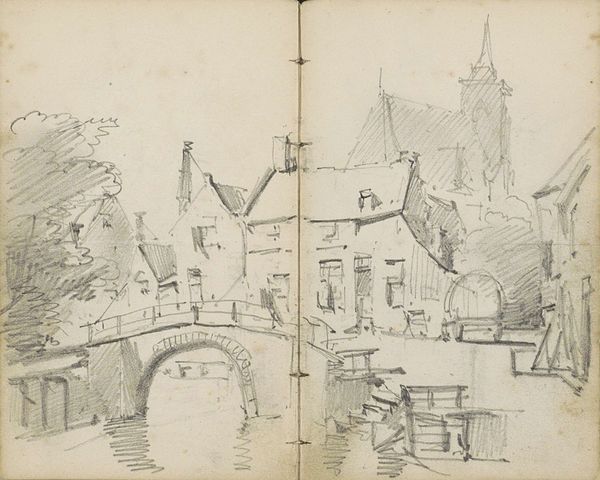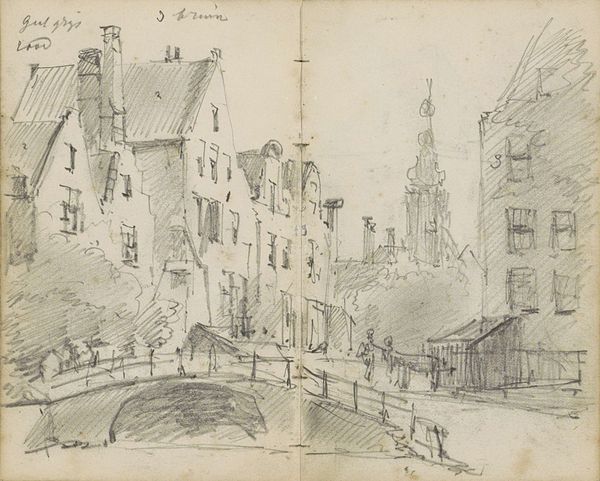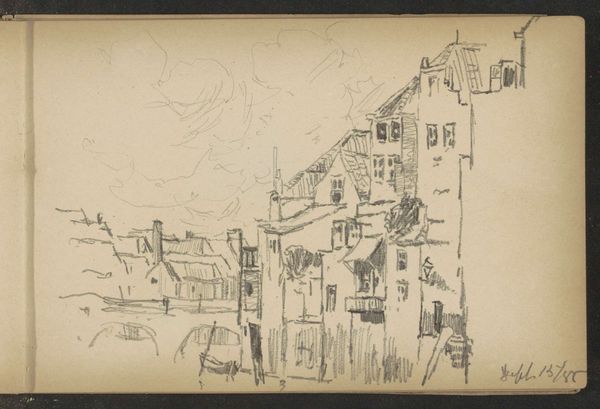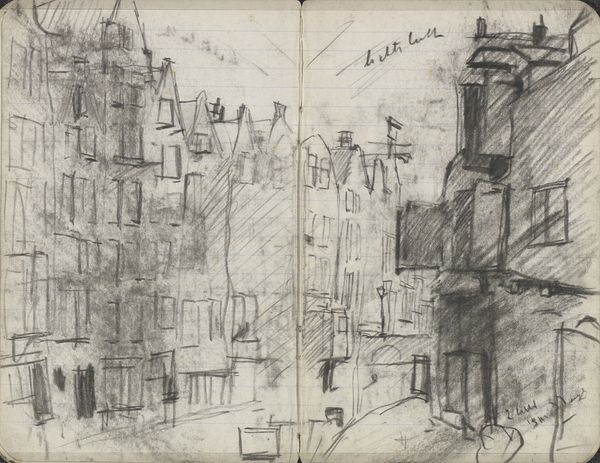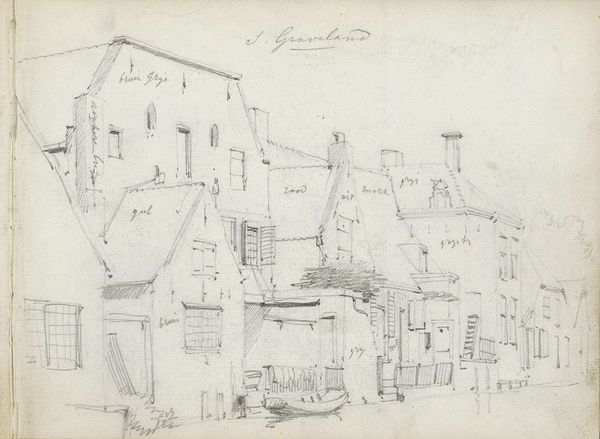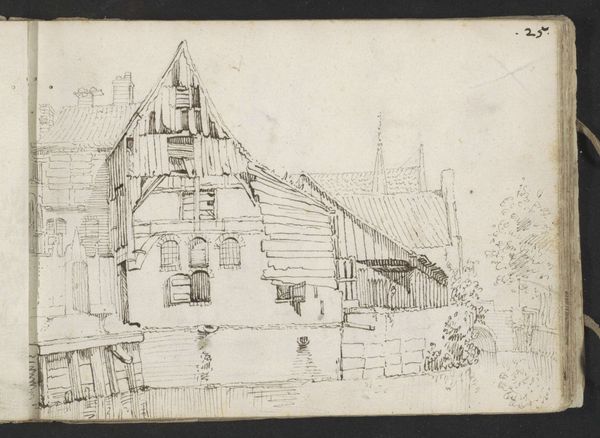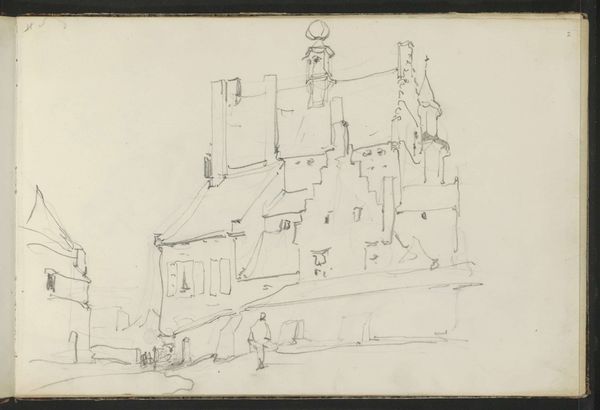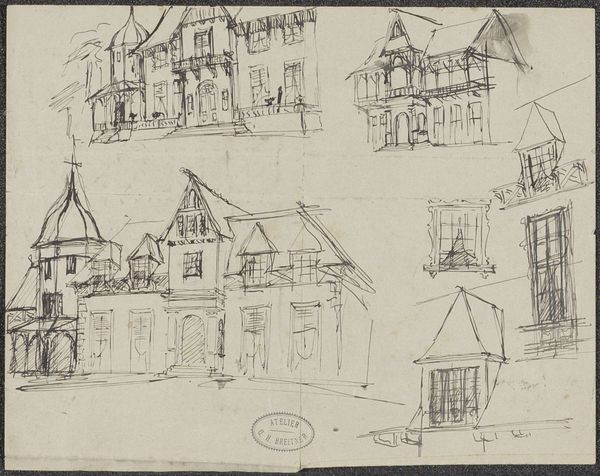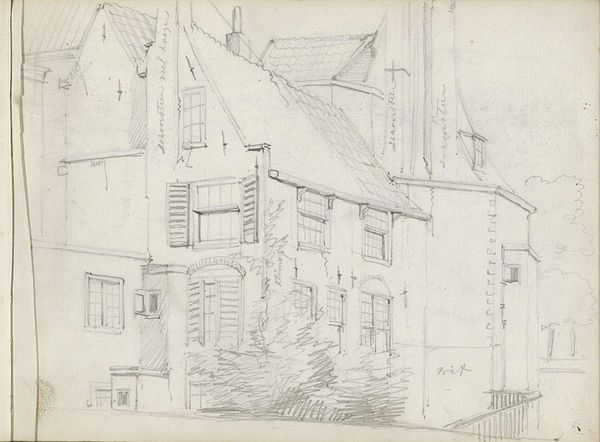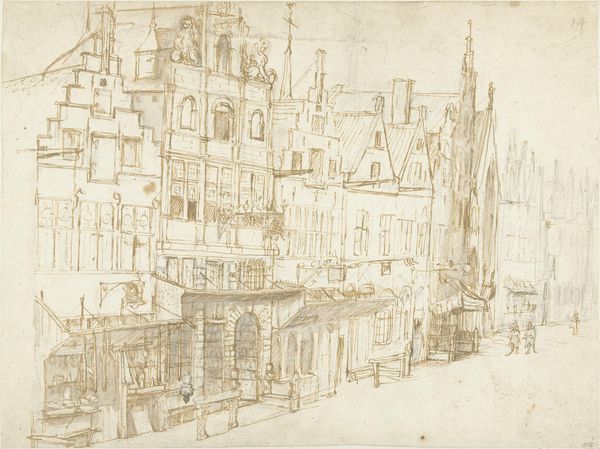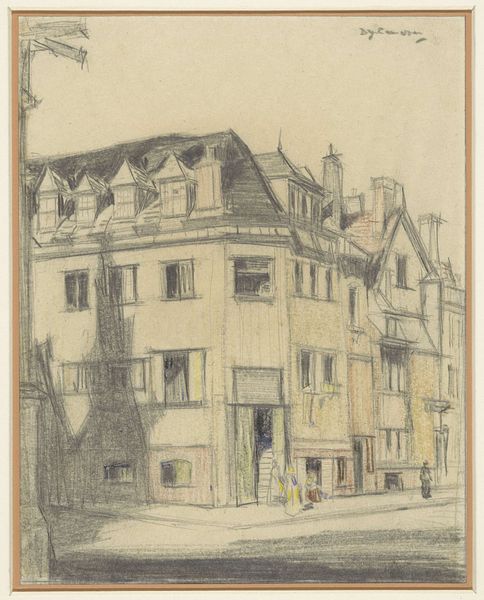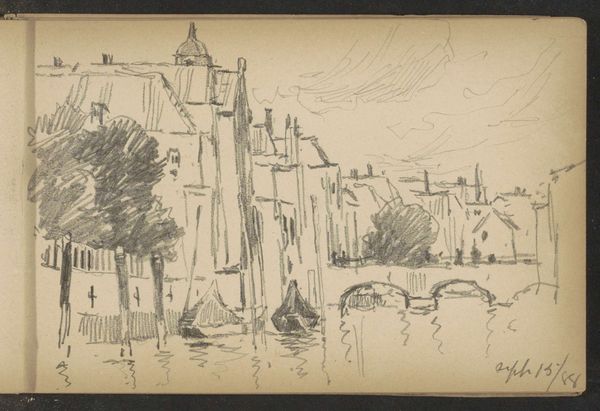
drawing, paper, pencil
#
drawing
#
dutch-golden-age
#
landscape
#
paper
#
pencil
#
cityscape
#
realism
Copyright: Rijks Museum: Open Domain
Willem Koekkoek sketched this cityscape with graphite on paper. What immediately strikes us is its unfinished quality; the sketchiness emphasizes the structural lines. We see the angular architecture of Amsterdam rendered with an eye for geometric form. Koekkoek uses line to define space. This structure lends itself to semiotic interpretation. The buildings can be read as signs, the windows and rooftops as codes pointing towards urban life. The bridge could be a metaphor, connecting different realms of experience. But there is more to it than just symbolism. The composition invites us to consider the relationship between art and reality. It's a commentary on representation itself; Koekkoek isn't merely depicting a city, he is deconstructing it into its basic components. Notice the subtle variations in line thickness, this adds depth and dimension. It prompts us to think about how sketches serve not just as preparatory studies but as investigations into the fundamental nature of seeing and representing.
Comments
No comments
Be the first to comment and join the conversation on the ultimate creative platform.
